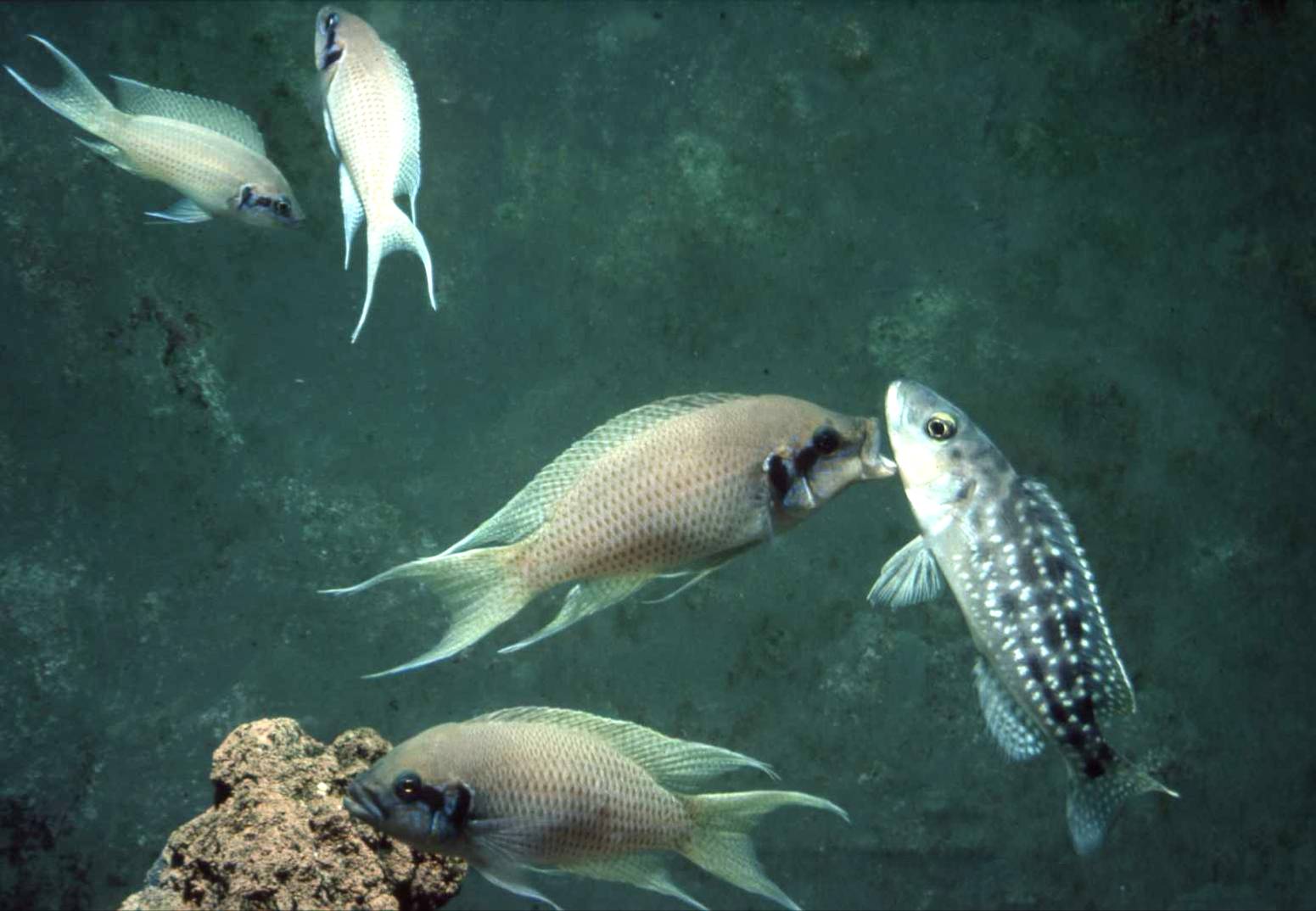Group size enhancement explains cooperation in fishes
The survival chances of group members are often greater in large than in small groups. In some species, non-reproducing group members therefore help raising offspring, even if they are unrelated. In an experimental study, researchers at the University of Bern investigated this seemingly altruistic behavior in cooperatively breeding fishes. Their results indicate that helping can evolve by natural selection through increased survival chances of brood care helpers by selectively increasing group size.
Cooperation is widespread in nature, most prominently exemplified by social insects like ants and honey bees, apart from humans. In social insects, cooperative brood care can be easily explained from an evolutionary perspective because helpers are related to the young and, therefore, brood care helpers are successfully passing on the genes coding for their altruistic behaviour via siblings sharing a common genetic makeup. “This is different in cooperatively breeding fishes, where many of the helpers are unrelated to the dominant pair they aid in raising their offspring”, says Michael Taborsky, senior author and supervisor of the new study. So why do unrelated group members help to raise “foreign” young? A paper published in Biology Letters by Irene García Ruiz and Michael Taborsky from the Institute for Ecology and Evolution at the University of Bern, reveals how such altruistic care of young can evolve by natural selection.
Group size is important for survival
These highly social fish live in rocky areas along the shores of Lake Tanganyika, Zambia. They form groups of different sizes and cooperate to defend the territory by mobbing away predators and digging out shelters to hide and to provide safe burrows for their broods. Previous studies showed that members of large groups survive better than individuals in small groups, owing to the better protection they get from the massive predation pressure they sustain. García-Ruiz and Taborsky hence hypothesized that it might be advantageous for non-reproducing group members to increase the group size by boosting the productivity of the breeding pair. To scrutinize this hypothesis, they tested the prediction experimentally that unrelated helpers provide more costly support to breeders in small than in large groups. After controlling for alternative explanations like help enforced by the dominants, potential relatedness effects and the possibility of load lightening in larger groups, the authors found that helpers indeed provided more help in smaller groups in the form of defense against a presented egg predator, confirming this hypothesis. “Because egg predators are not a threat to the helpers, this behaviour is seemingly altruistic,” says first author Irene García Ruiz. The same holds for digging out the breeding shelter, a service the helpers provided to protect the brood.
Helper size influences task specialization
“An important finding of our study is that only large helpers increased the antipredator defense of eggs”, says Irene García Ruiz. Small helpers, instead, engaged more in egg care, which includes cleaning the eggs and providing oxygen. “The size-specific task differentiation of helpers in these cooperative cichlids may reflect different abilities that affect both efficiency and fitness benefits from group size attained at different ages”, says Michael Taborsky. For instance, larger, higher ranked individuals queuing for the breeding position may help more because they are more likely to inherit the territory, obtaining additional benefits by the number of helpers in the group.
The results of this study confirm theoretical predictions for the first time experimentally that seemingly altruistic help can evolve by increasing survival chances in the long run through directed group size enhancement.
Publication details:García-Ruiz I, Taborsky M. (2022). “Group augmentation on trial: helpers in small groups enhance antipredator defence of eggs” Biology Letters. DOI: 10.1098/rsbl.2022.0170 |
The Division of Behavioural Ecology in the Institute of Ecology and EvolutionThe Division of Behavioural Ecology of the Institute of Ecology and Evolution at the University of Bern studies the evolutionary mechanisms underlying animal behaviour, depending on ecological and social conditions. In combination with the other divisions of the Institute, this helps creating a scientific basis for the understanding and preservation of our living world. The division studies the mechanisms by which organisms respond to and interact with their environment, including phenotypic responses at individual level, change in gene frequencies at population level, and the evolution of key features of all different kinds of animal behaviour and social systems. |
2022/10/05



